-
 +26 +4
+26 +4Scientists created a new sponge that could clean up oil spills
The secret to cleaning up contaminated water may lie in the cheap, common polyurethane foam used in mattresses. In a study published in the journal Nature Sustainability this week, scientists tested the ability of the material, enhanced with a special coating, to soak up tiny droplets of oil suspended in water. They found that it consistently captured almost all of the oil in under three hours.
-
 +7 +1
+7 +1Chromium: Lust for colour
Van Gogh's yellow sunflowers owe a debt to Louis Vaquelin, the chemist who discovered the element chromium
-
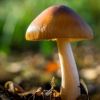 +3 +1
+3 +1Why magic mushrooms turn dark blue when picked
Scientists isolate two enzymes that paint psilocybin-laden mushrooms an unearthly colour.
-
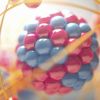 +22 +2
+22 +2A.I.'s are helping design new molecules using quantum chemistry
In the fast-paced, complicated world of quantum chemistry, A.I.’s are used to help chemists calculate important chemical properties and make predictions about experimental outcomes. But, in order to do this accurately, these A.I. need to have a pretty strong understanding of the fundamental rules of quantum mechanics, and researchers of a new interdisciplinary study on the topic say these quantum predictions have been lacking for some time. A new machine learning framework could be the answer.
-
 +22 +3
+22 +3Nobel price for chemistry awarded to three scientists for creating a rechargeable world
John B. Goodenough, M. Stanley Whittingham, and Akira Yoshino won the Nobel Prize in Chemistry 2019 "for the development of lithium-ion batteries."
-
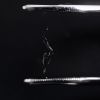 +13 +1
+13 +1A combination of wood fibres and spider silk could rival plastic
Achieving strength and extensibility at the same time has so far been a great challenge in material engineering: increasing strength has meant losing extensibility and vice versa. Now Aalto University and VTT researchers have succeeded in overcoming this challenge, with inspiration from nature.
-
 +4 +1
+4 +1AI learns the language of chemistry to predict how to make medicines
Researchers have designed a machine learning algorithm that predicts the outcome of chemical reactions with much higher accuracy than trained chemists and suggests ways to make complex molecules, removing a significant hurdle in drug discovery.
-
 +20 +5
+20 +5Watch This Hong Kong Protester Instantly Neutralize Tear Gas
An expert weighs in on the science behind the trick.
-
 +21 +4
+21 +4A fungus makes a chemical that neutralizes the stench of skunk spray
A puppy pal that gets sprayed by a skunk is no friend to human noses. The nasty odor can linger for weeks or more. But at least one kind of Tolypocladium fungi makes a chemical that can snuff out the stink. Called pericosine, it reacts with skunk spray’s sulfur-containing compounds, forming residues that aren’t offensive to the nose and can be more easily washed away, researchers report in the July 26 Journal of Natural Products.
-
 +10 +2
+10 +2Pig-Pen Effect: How our "personal pollution clouds" affect indoor air quality
New research has found that each of us is regularly producing our own personal cloud of pollutants, affecting indoor air quality. But not the way you think. The team found that oils on our skin and clothes are reacting with ozone in the air, producing a range of volatile and semi-volatile substances
-
 +5 +1
+5 +1Stronger than aluminum, a heavily altered wood cools passively
Most of our building practices aren't especially sustainable. Concrete production is a major source of carbon emissions, and steel production is very resource intensive. Once completed, heating and cooling buildings becomes a major energy sink. There are various ideas on how to handle each of these issues, like variations on concrete's chemical formula or passive cooling schemes.
-
 +20 +4
+20 +4Artificial photosynthesis transforms carbon dioxide into liquefiable fuels
Chemists at the University of Illinois have successfully produced fuels using water, carbon dioxide and visible light through artificial photosynthesis. By converting carbon dioxide into more complex molecules like propane, green energy technology is now one step closer to using excess CO2 to store solar energy—in the form of chemical bonds—for use when the sun is not shining and in times of peak demand.
-
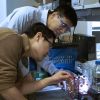 +15 +4
+15 +4Researchers use sunlight to pull hydrogen from wastewater
A research team at Princeton University has harnessed sunlight to isolate hydrogen from industrial wastewater. By Molly A. Seltzer.
-
 +8 +1
+8 +1The elements, in haiku
An interactive review of the periodic table -- composed of 119 haiku
-
 +24 +4
+24 +4Green material for refrigeration identified
Researchers from the UK and Spain have identified an eco-friendly solid that could replace the inefficient and polluting gases used in most refrigerators and air conditioners.
-
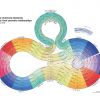 +20 +2
+20 +2There's More Than One Periodic Table. Here Are Some Designs You've Never Seen
In 1869, a Siberian called Dmitri Mendeleev presented a brand new version of the periodic table of elements to his peers at the Russian Chemical Society.
-
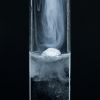 +26 +5
+26 +5Confirmed: New phase of matter is solid and liquid at the same time
The mind-bending material would be like a sponge made of water that's leaking water.
-
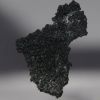 +4 +1
+4 +1Sorry, graphene—borophene is the new wonder material that’s got everyone excited
Not so long ago, graphene was the great new wonder material. A super-strong, atom-thick sheet of carbon “chicken wire,” it can form tubes, balls, and other curious shapes. And because it conducts electricity, materials scientists raised the prospect of a new era of graphene-based computer processing and a lucrative graphene chip industry to boot.
-
 +29 +5
+29 +5There really is something unique about Tennessee whiskey, study finds.
So-called "Lincoln County Process" is a critical step in achieving smooth flavor.
-
 +33 +7
+33 +7The periodic table is 150 years old this week
Its creation is a perfect illustration of how science progresses
Submit a link
Start a discussion




















